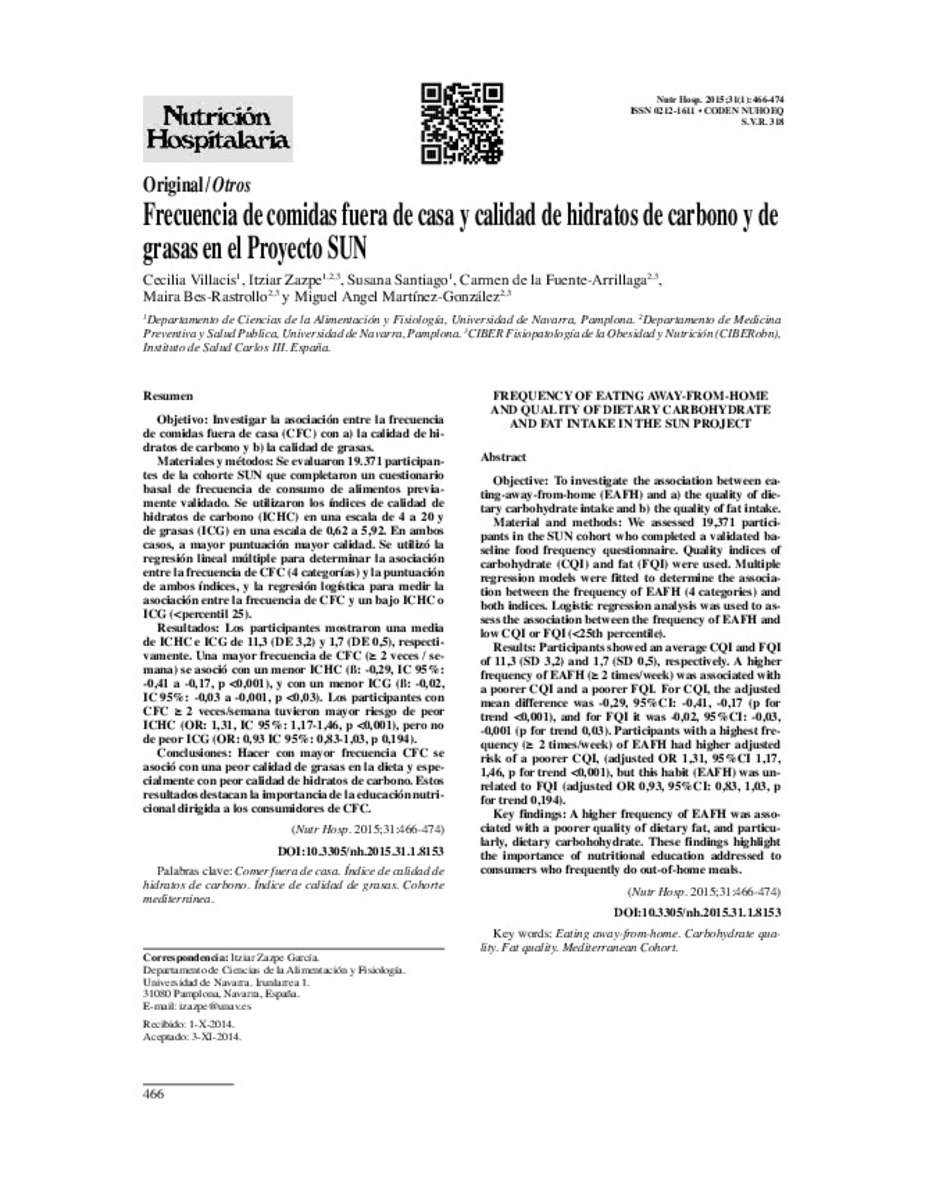Frecuencia de comidas fuera de casa y calidad de hidratos de carbono y de grasas en el proyecto SUN
Files in This Item:
Statistics and impact
Items in Dadun are protected by copyright, with all rights reserved, unless otherwise indicated.








